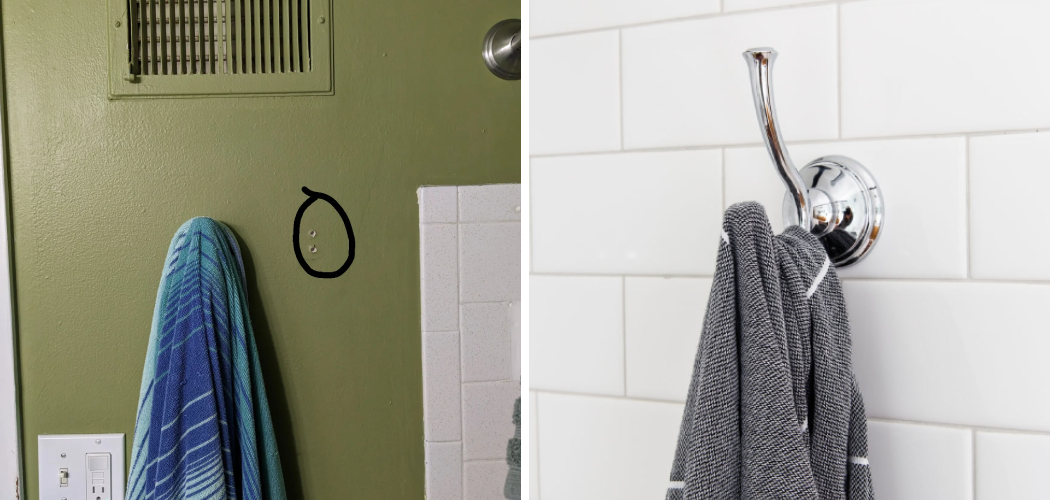Anchoring a towel hook securely is essential for both functionality and aesthetics in any bathroom or kitchen. A well-anchored towel hook not only provides a convenient spot to hang towels but also enhances the overall decor of the space.
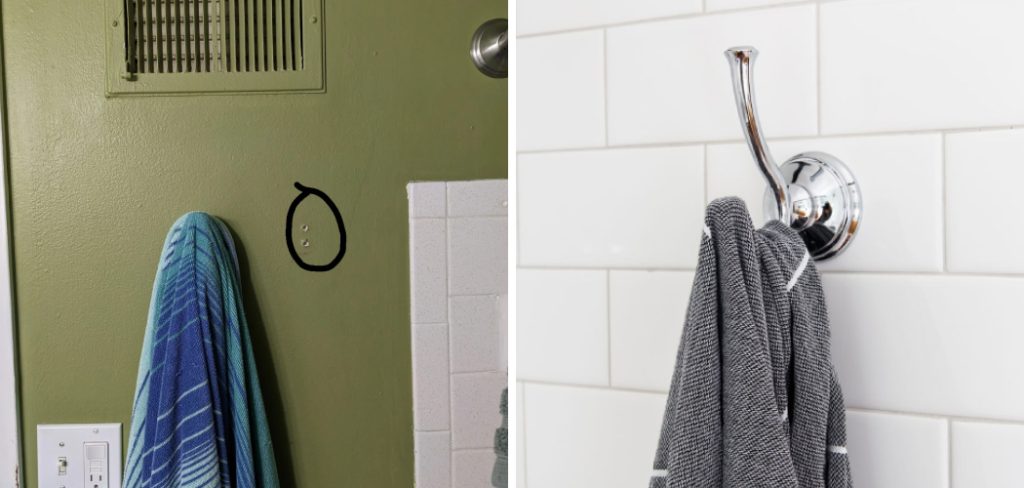
In this guide on How do you anchor a towel hook, we will cover the various methods and tools needed for properly installing a towel hook, ensuring it can withstand daily use while adding a stylish touch to your home. Whether you are a DIY enthusiast or a novice looking to complete a simple home improvement project, you’ll find useful tips and step-by-step instructions to achieve a perfect installation.
What is a Towel Hook?
A towel hook is a simple yet functional hardware piece designed to hold towels, robes, or other hanging items in a convenient and accessible manner. Typically installed in bathrooms, kitchens, or laundry rooms, towel hooks come in various styles, materials, and finishes to match any decor. They can be mounted on walls, doors, or cabinets, providing flexibility in placement and usage.
Towel hooks not only serve the practical purpose of drying and storing towels but also contribute to the organization and aesthetics of a space, making them a popular choice for both residential and commercial settings.
Needed Materials
Before you begin installing a towel hook, it is essential to gather all the necessary materials. The following tools and supplies are commonly required when anchoring a towel hook:
Drill:
A power drill is a handy tool that allows you to make precise holes in different types of surfaces. Make sure to use the correct size of drill bit for the type of anchor you are using.
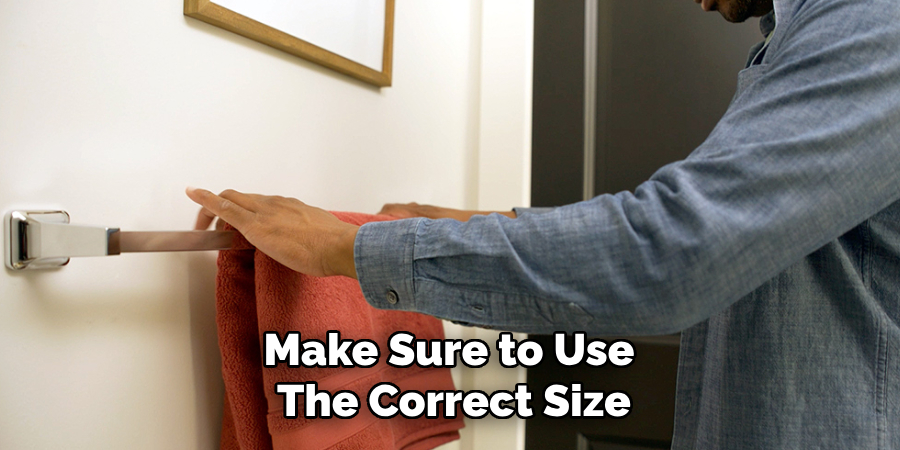
Screws:
Depending on the type of wall or surface you are mounting your towel hook onto, you will need appropriate screws. Whether it’s wood, drywall, or tile, make sure the screws are long enough and strong enough to securely hold the weight of the hook and any items hung on it.
Anchors:
Anchors provide additional support and stability when installing a towel hook on drywall or other hollow surfaces. There are various types of anchors available, such as plastic, metal, or toggle anchors, each designed for specific purposes and weight capacities. Be sure to choose the right type of anchor for your project.
Level:
A level is used to ensure that the towel hook is installed straight and even. This tool helps achieve a polished and professional look.
Pencil & Tape Measure:
These basic tools are essential for marking the exact placement of the towel hook on the wall. A pencil allows you to make precise markings without damaging the wall’s surface, while a tape measure ensures accurate and consistent measurements.
8 Steps on How Do You Anchor a Towel Hook
Step 1: Determine the Placement
Choosing the right location for your towel hook is crucial for both convenience and aesthetics. Start by considering the functionality of the hook; it should be easily accessible from where towels will be used, such as in the bathroom near the sink or in the kitchen close to the oven or handwashing area. Use a tape measure to find an optimal height, generally about 48 to 60 inches from the floor, ensuring it’s comfortably reachable for all users.
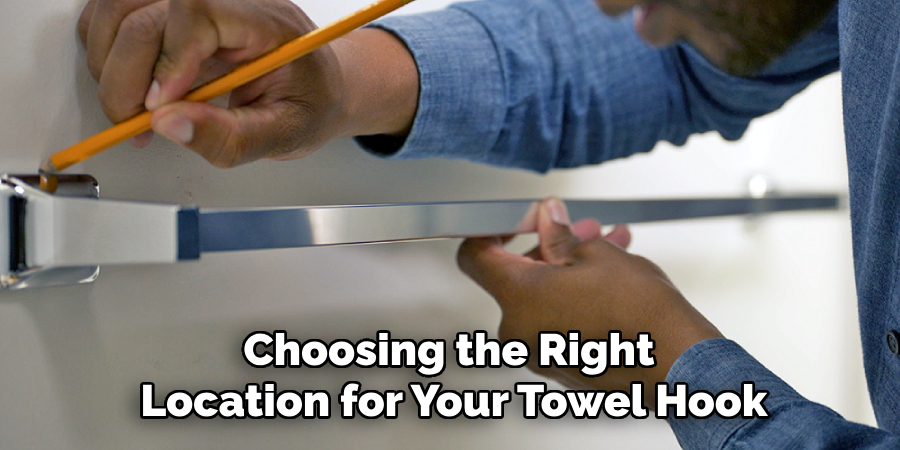
Additionally, the distance from other fixtures should be taken into account to avoid crowding and facilitate a clean, organized appearance. Once you’ve identified the ideal spot, mark it lightly with a pencil to guide your installation process.
Step 2: Prepare the Towel Hook
Before mounting your towel hook, it’s important to prepare the hook itself to ensure a smooth installation. Begin by taking the towel hook out of its packaging and inspecting it for any defects or missing components. If your towel hook comes with a backplate, ensure it is attached correctly before installation. Next, refer to the manufacturer’s instructions to determine if any parts need to be assembled ahead of time.
Some hooks might require you to attach brackets or fittings that will hold the hook in place. Once everything is ready, gather the screws and anchors that are compatible with the towel hook and surface you’ll be mounting it on. This pre-installation checklist will help streamline the process and ensure that you have all the necessary components at hand for a successful installation.
Step 3: Drill Pilot Holes
With the placement marked and the towel hook prepared, the next step is to drill pilot holes for your screws. Using a drill with the appropriate-sized bit for your anchors, carefully drill into the wall at the marked locations. It’s important to drill to the correct depth, which typically corresponds to the length of the anchor you’ll be using; refer to the anchor packaging for guidance.
Be cautious and maintain a steady hand to avoid drilling too deeply or damaging the surrounding area. If you’re drilling into a hard surface like tile or masonry, consider using a masonry bit to ensure a clean hole. Once all pilot holes are drilled, clear away any debris to prepare for the next step in the installation process.
Step 4: Install Anchors
If you’re not mounting the towel hook onto a wooden surface, it’s essential to use anchors for added support. Carefully insert each anchor into its designated hole and gently tap it with a hammer to secure it in place. Some anchors may require additional steps, such as using a screwdriver to expand them once they’re inserted into the wall. Again, refer to the manufacturer’s instructions for specific guidance on your chosen type of anchor.
The anchors should sit flush with the wall surface, and you should be able to feel a slight resistance when pulling on them to ensure they are firmly in place.
Step 5: Secure the Towel Hook
Once your anchors are installed, it’s time to attach the towel hook. Align it with the pilot holes and carefully insert screws into each hole through the backplate or fittings of your hook. Use a screwdriver or power drill to drive each screw into its designated anchor, ensuring everything is tight but not overly tightened as this could cause damage or breakage.
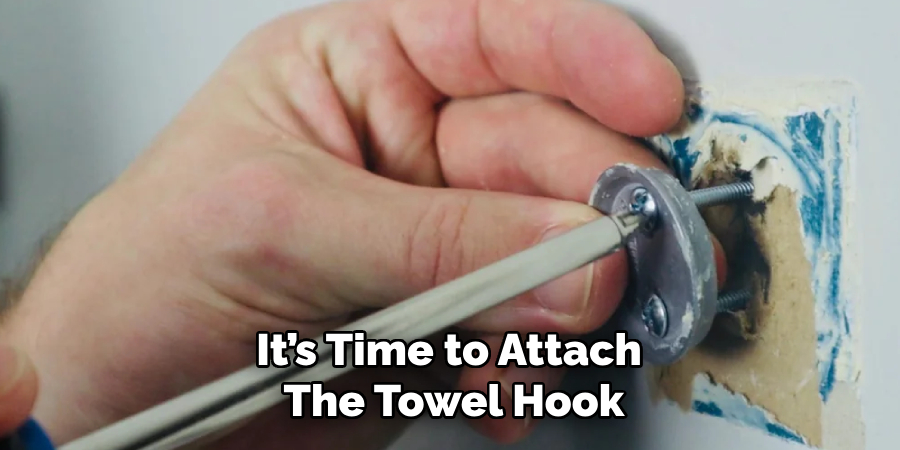
You can use a level at this point to double-check that your towel hook is straight and adjust if necessary. Once you’re satisfied with the placement, secure any additional screws or fittings needed to keep the hook in place.
Step 6: Test for Stability
To ensure your towel hook is secure and stable, give it a light tug with your hand. If it moves or feels loose, tighten the screws further or check that the anchors are properly inserted. It’s essential to have a sturdy mount for your towel hook as it will bear the weight of towels and other items hung on it.
The towel hook should now be fully attached to the wall, and you’re ready to use it.
Step 7: Clean Up
With your towel hook successfully installed, it’s time to clean up any dust or debris left behind from drilling and installation. Use a damp cloth or sponge to wipe away any residue from the wall and surrounding area.
If necessary, touch up any markings on the wall with paint or a colored pencil. This will help maintain the overall appearance of your space.
Step 8: Hang Towels & Enjoy
Now that your towel hook is securely installed, it’s time to put it to use. Hang your towels or other items on the hook and enjoy the convenience and style it adds to your space.
Remember to check periodically for any loosening of screws or anchors and tighten as necessary. With proper installation and maintenance, your towel hook should provide functional use for years to come.
Additional Tips
- When drilling into a hard surface, such as tile or masonry, start with a smaller bit size before using the appropriate bit for your anchor. This will help prevent cracking or damage to the surface.
- If you’re unsure about which type of anchor to use, ask for assistance from a hardware store or consult with a professional.
- If you plan to hang heavier items on your towel hook, consider using toggle bolts for added support. Be sure to check the weight limitations of your chosen anchor before installation.
- Don’t limit your towel hook’s use to just towels. You can also hang other items such as robes, handbags, or even plants, for a unique and functional touch.
- When installing multiple towel hooks in the same area, make sure they are evenly spaced and aligned for a cohesive look.
- Regularly clean and dust your towel hook to maintain its appearance and prevent any build-up of dirt or grime.

By following these steps and tips on How do you anchor a towel hook, you can easily install a towel hook in your space and enjoy the convenience and style it brings. Remember to always refer to the manufacturer’s instructions for specific guidance on your chosen towel hook, and don’t be afraid to seek assistance if needed.
Conclusion
In conclusion, installing a towel hook is a straightforward process that enhances the functionality and aesthetic of your space. By following the outlined steps on How do you anchor a towel hook carefully—from preparation and mounting to final adjustments—you can ensure a secure and lasting installation. Regular maintenance checks will help you keep your towel hook in optimal condition, allowing it to serve its purpose effectively.
Whether for towels, robes, or other accessories, a well-installed towel hook not only declutters your environment but also adds a touch of style to your home. With the right tools and materials, anyone can confidently tackle this DIY project and enjoy the benefits it brings.

